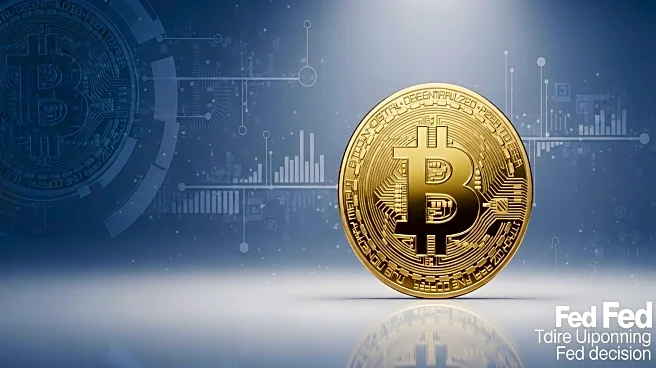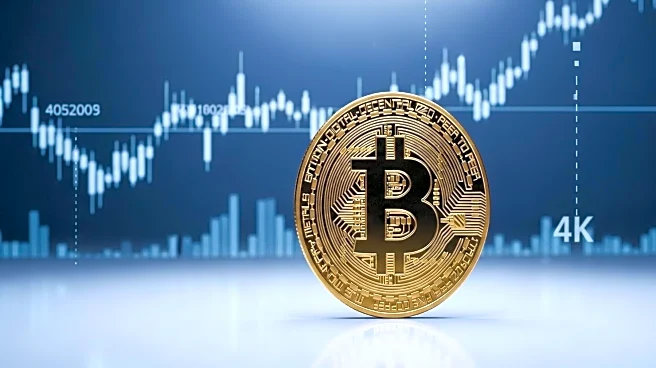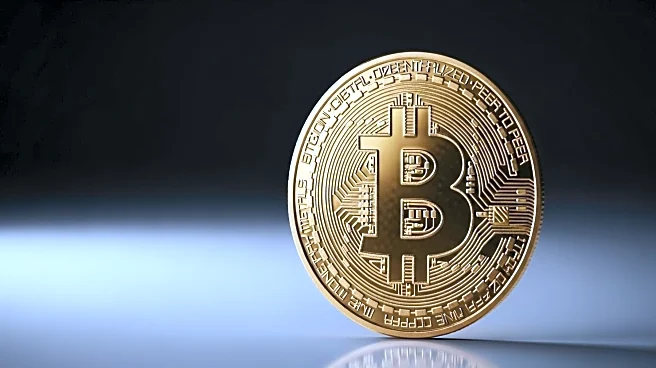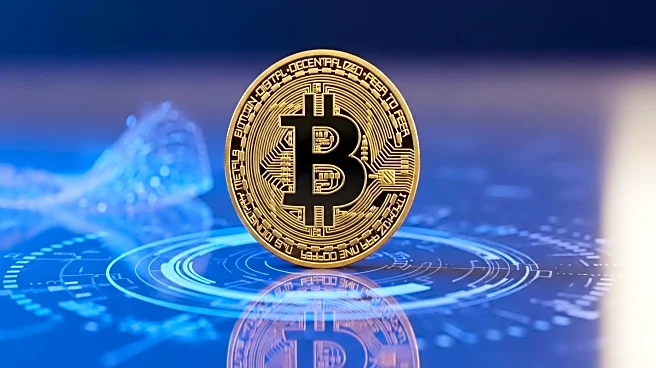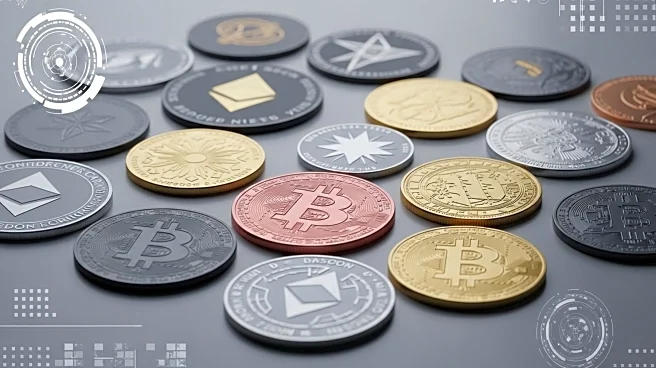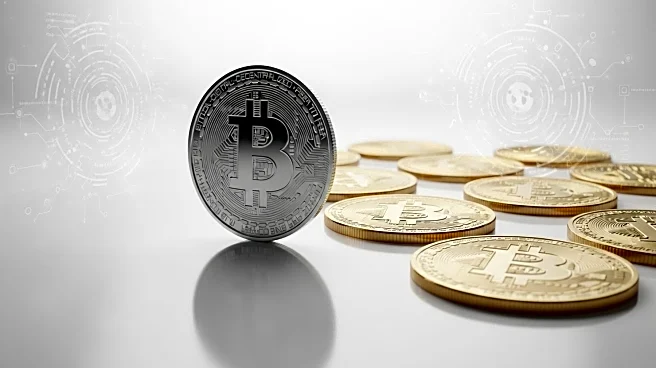What's Happening?
Bitcoin has experienced a significant price surge, surpassing $109,000 for the first time in over a year. This increase is attributed to macroeconomic factors and growing institutional adoption. The digital asset had previously struggled to break the $60,000 level in early 2024 but has now extended its rally into late Q3 2025. Analysts credit the surge to Federal Reserve easing expectations, a decline in short-term interest rates, and a shift in capital towards high-risk assets. The recent Bitcoin halving event in April 2024, which reduced the block reward for miners, has tightened the supply of new coins, contributing to the price appreciation. Institutional investors, including pension funds and sovereign wealth funds, have increased their Bitcoin holdings, reinforcing bullish momentum. Additionally, the U.S. SEC's approval of Bitcoin futures-based ETFs has attracted significant inflows, further supporting the price increase.
Why It's Important?
The surge in Bitcoin's price highlights its growing acceptance as a mainstream financial asset. Institutional adoption and regulatory developments, such as the approval of Bitcoin ETFs, are significant milestones that enhance Bitcoin's legitimacy and integration into traditional financial systems. This trend could lead to increased investment in digital assets, impacting the broader cryptocurrency market. The price increase also reflects a shift in asset allocation towards equities and digital assets, driven by macroeconomic conditions like falling inflation rates. As central banks explore Bitcoin's use in digital currency strategies, the asset class gains further credibility, potentially influencing global financial policies and investment strategies.
What's Next?
Investors are closely monitoring upcoming Bitcoin network upgrades, which aim to enhance scalability and reduce transaction costs. These changes could solidify Bitcoin's position as a globally accepted digital store of value. The price surge has also reignited interest in Bitcoin mining operations, with new facilities announced in regions with low-cost renewable energy sources. This could affect Bitcoin's hash rate and the global mining network. Analysts caution that volatility remains a characteristic of Bitcoin's price action, with potential for profit-taking and short-term corrections. However, long-term trends suggest Bitcoin may maintain elevated price levels.


